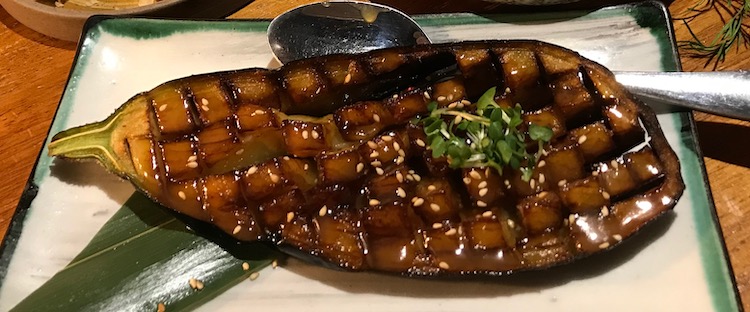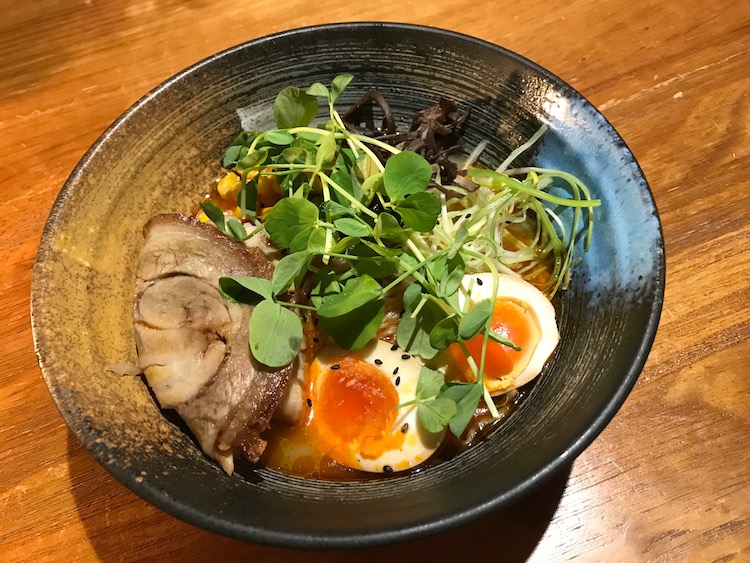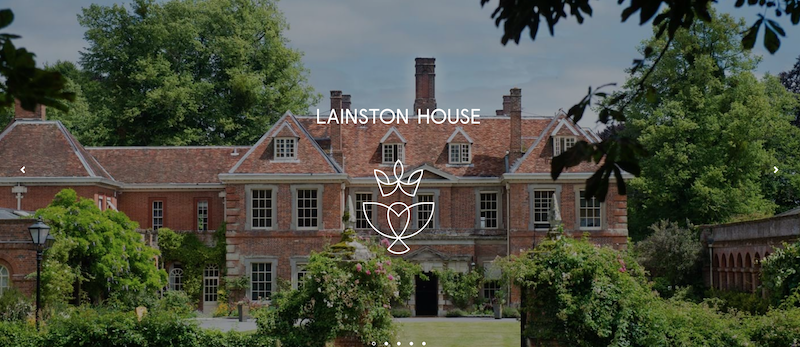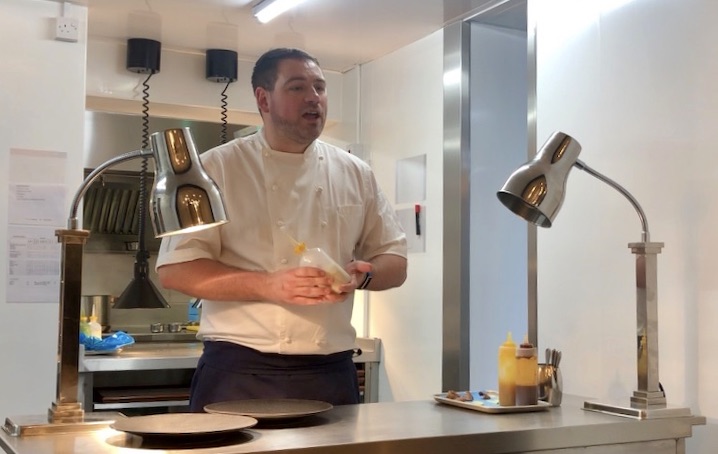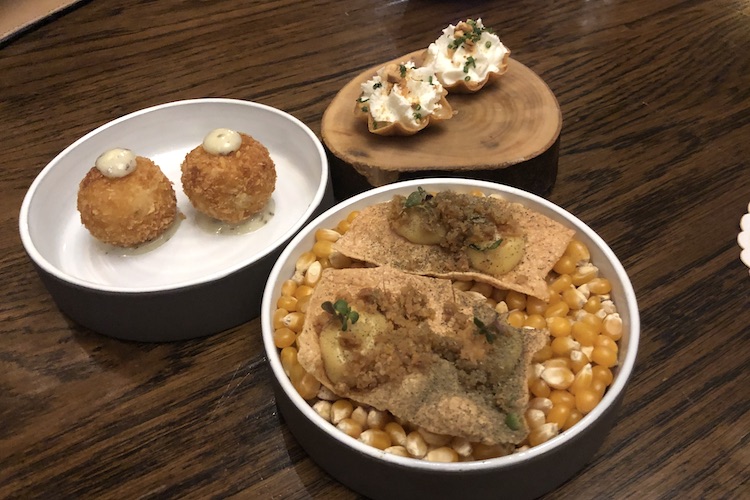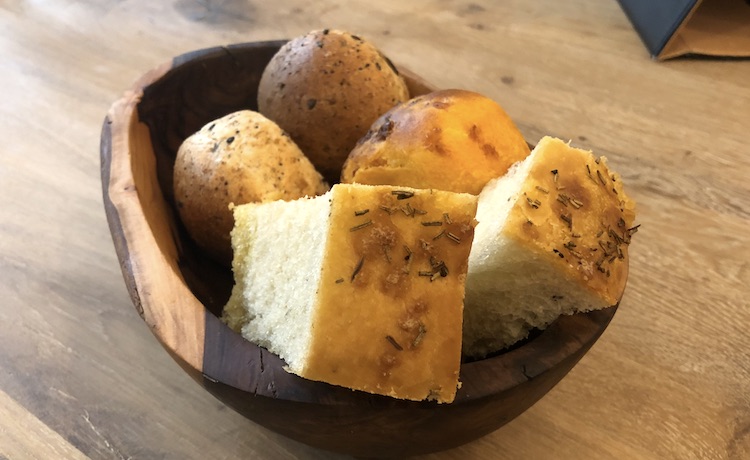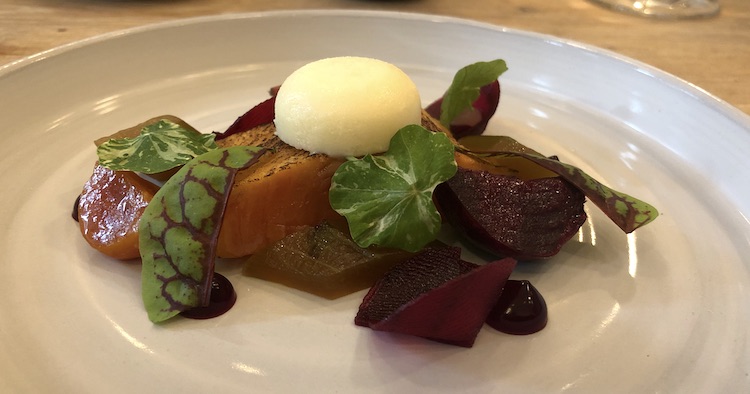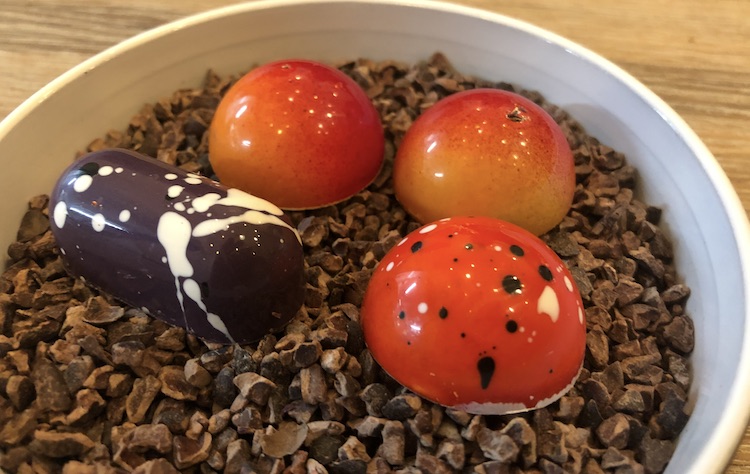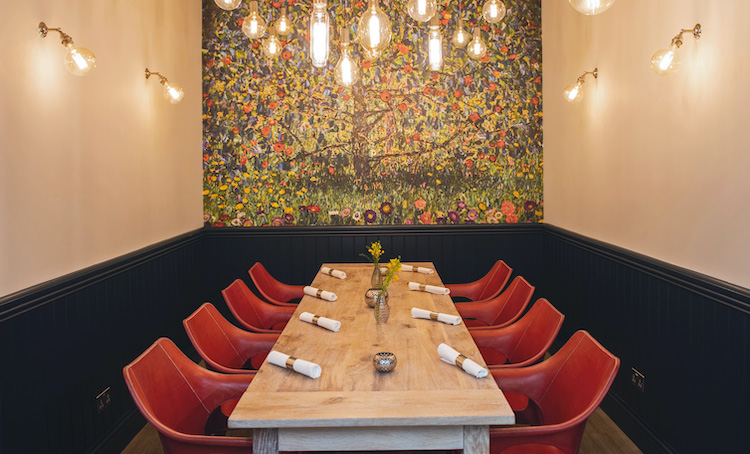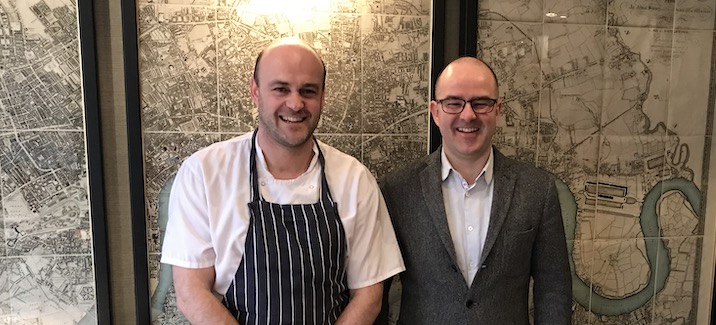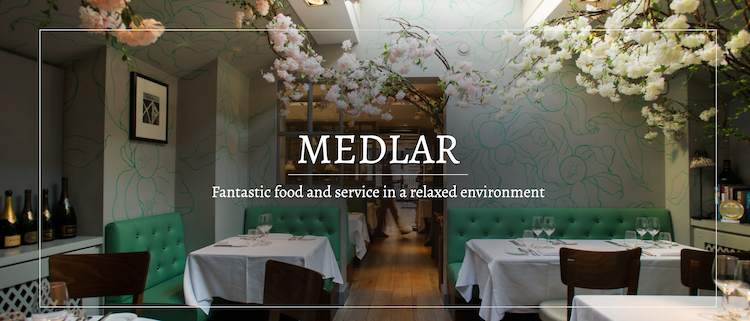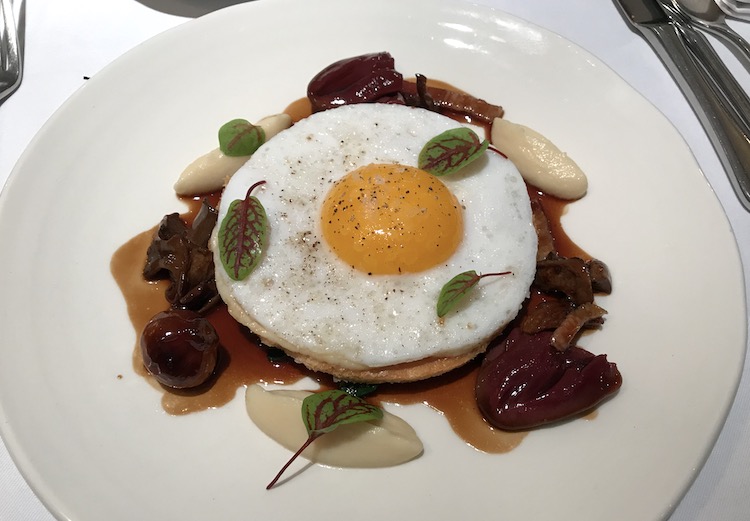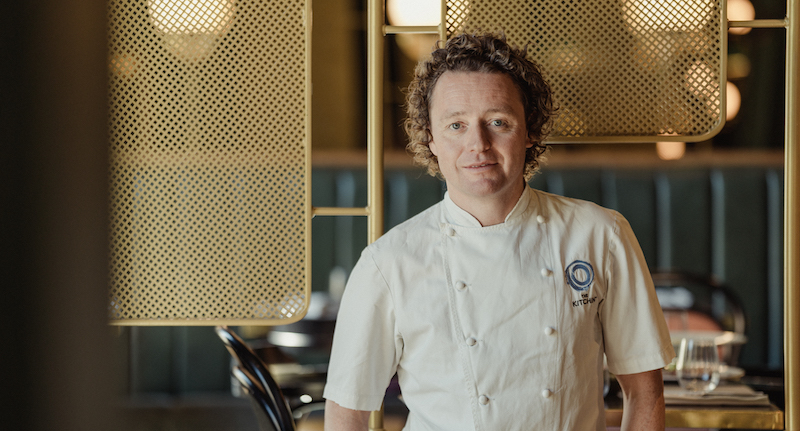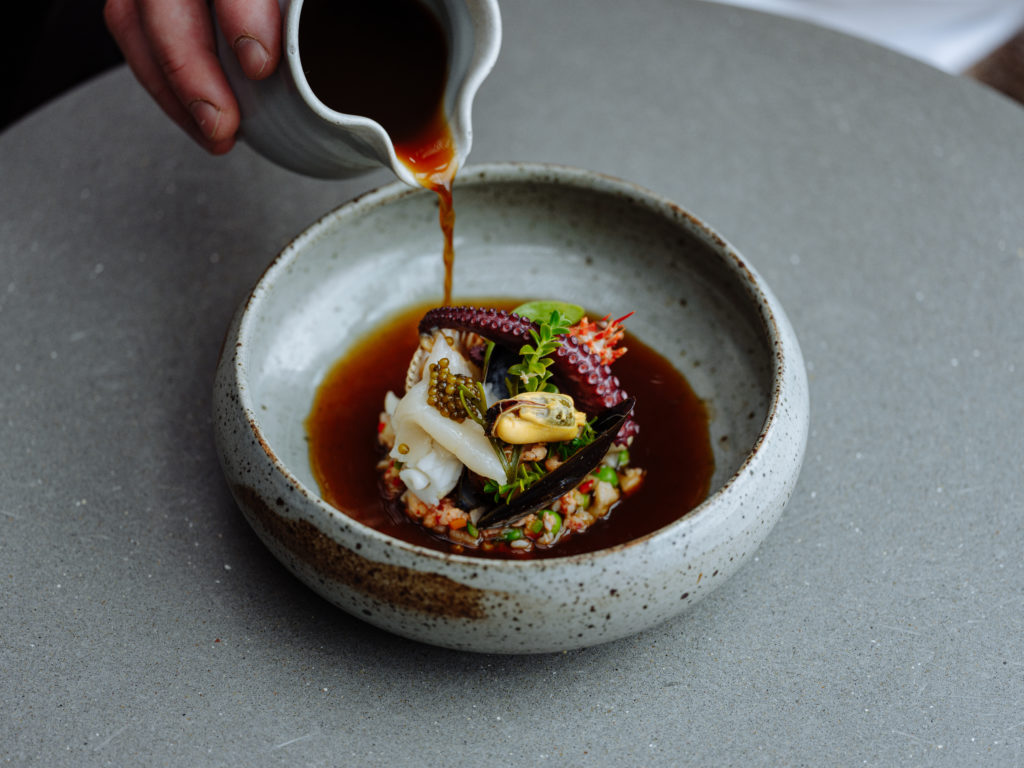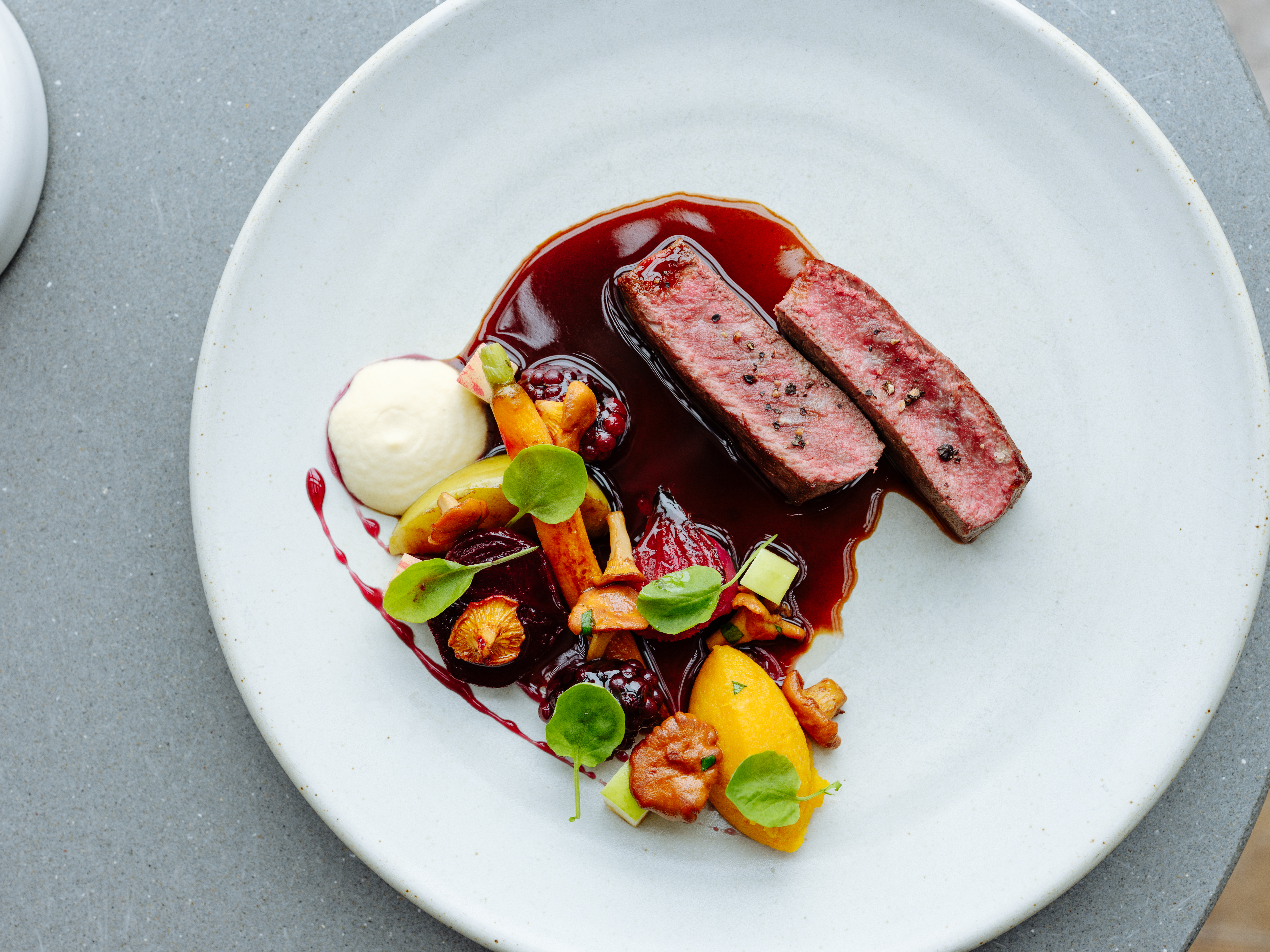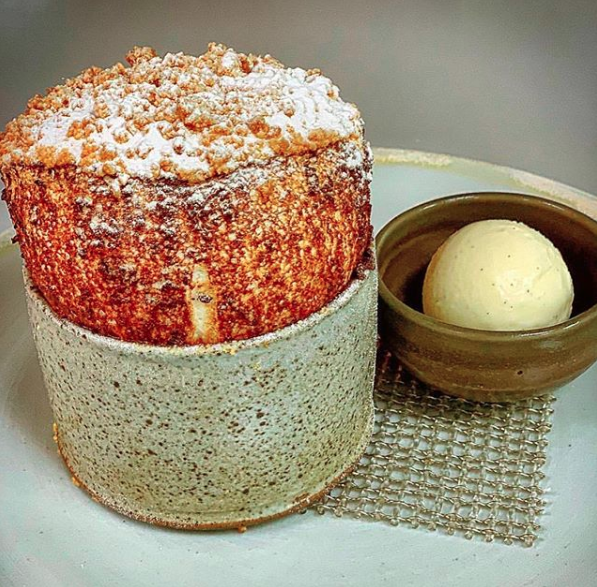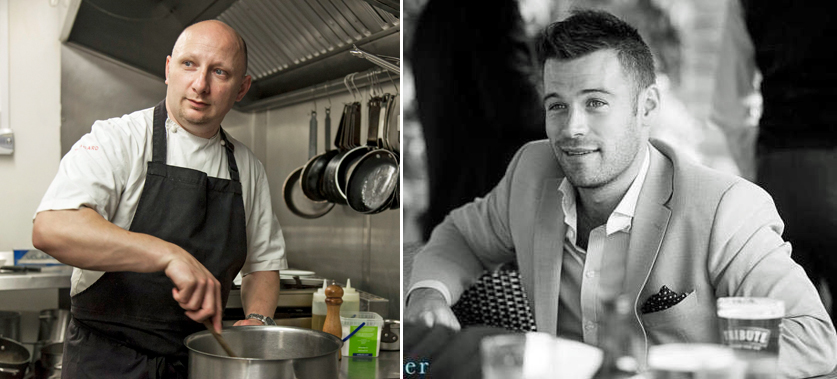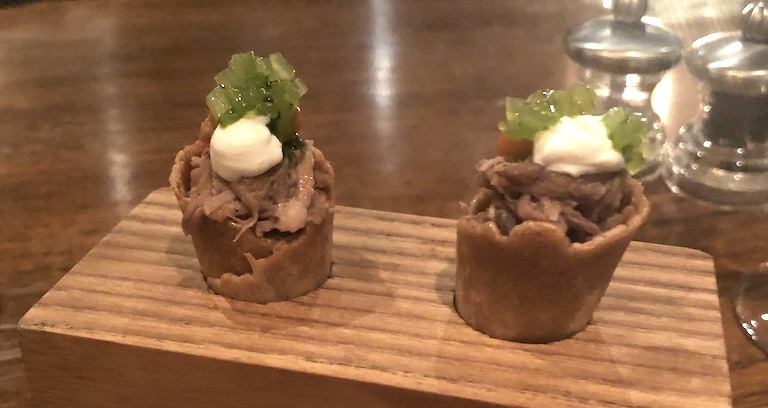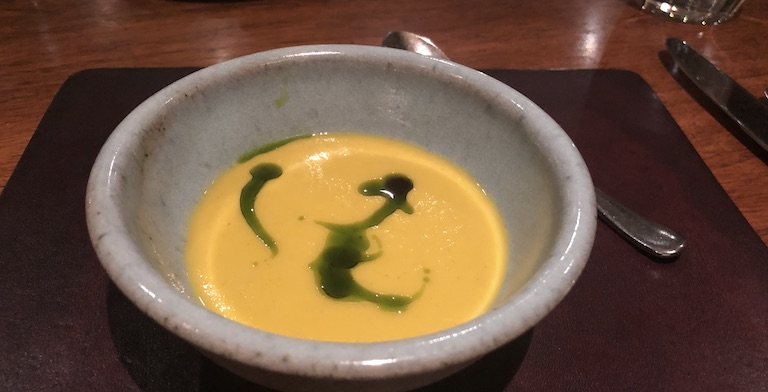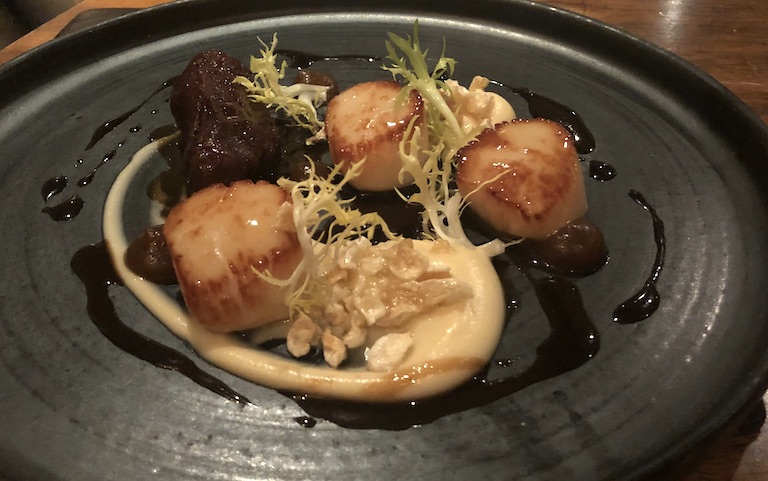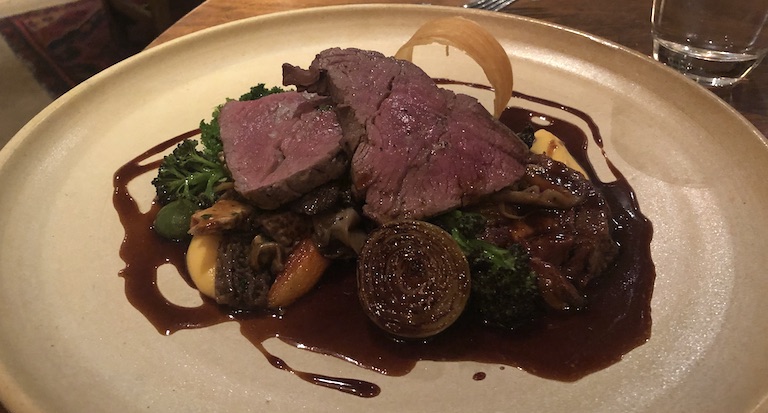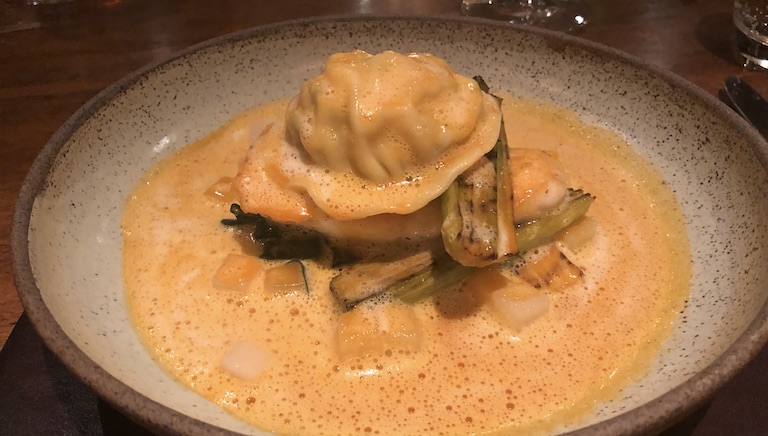Few restaurants in Edinburgh have received immediate critical and popular acclaim than The Little Chartroom on Albert Place, Leith Walk. Opened in the summer of 2018, it has garnered adulatory reviews by notable critics in the Edinburgh and national press, as well being awarded Best Newcomer 2019 in the Edinburgh Restaurant Awards. Placed in The Estrella Damm National Restaurant Awards Top 100 list, and winning an Eating & Drinking Award from The List Magazine, it also has entries in the Michelin Guides of 2019 and 2020, and the Good Food Guide, 2020. Joint owner and head chef Roberta Hall won the Young British Foodie chef award 2018 and Breakthrough Chef of the Year at the Food and Travel Awards. Her national profile will be further boosted this spring, as she represents Scotland in the BBC’s Great British Menu.
Welcoming, friendly, relaxed, honest and unpretentious, Roberta’s demeanour and personality mirror the engaging qualities of her intimate 18 cover restaurant. Fortunately, she found the time after a busy lunch service on Thursday 12th March to give an interview to Daniel Darwood of Fine Dining Guide.

[Shaun McCarron alongside co-owbner and chef Roberta Hall, The LIttle Chartroom restaurant]
Roberta’s father owned three butcher’s shops which expanded into a meat factory specialising in curing bacon and producing sausages and haggis, so an interest in food began at an early age. A love of baking in particular developed into a more serious interest in the profession during a week’s work experience, which she loved, at the Tower Restaurant in the National Museum of Scotland. This was followed by a part time job there, which became full time after she left school. Subsequently, two years at Glasgow cookery college provided a grounding in the basics but proved less appealing than practical experience gained in part time jobs in the evenings and her days off.
After working in the kitchens of Edinburgh’s Balmoral hotel, and eighteen months in Dubai at the world-famous Burj Al Arab, Roberta returned to her native Edinburgh in 2008 to work at Tom Kitchin’s Leith restaurant, where she stayed for three and a half years. It was here that she absorbed the chef patron’s totally fresh and passionate approach to food. She found his use of all parts of the animal, and his respect for, and showcasing of, the finest Scottish meat, game, fish and vegetables, truly inspirational. Equally driven with an infectious enthusiasm as a mentor was Dominic Jack, with whom she eventually left to set up The Kitchin’s sister restaurant, Castle Terrace. Her three years as sous chef, then three as head chef, helped to establish its reputation as a destination restaurant in central Edinburgh.
Nine and a half years under two of Edinburgh’s leading chefs have inevitably left their imprint on Roberta’s cuisine. Their uncompromising love of top quality, seasonal ingredients and their devotion to their craft are unquestioned. Whilst Castle Terrace’s more refined attention to detail involving more cooking processes contrasted with the less complicated, but equally accomplished methods of The Kitchin, both approaches, together with Roberta’s distinctive style, have been integrated into the food of the Little Chartroom.
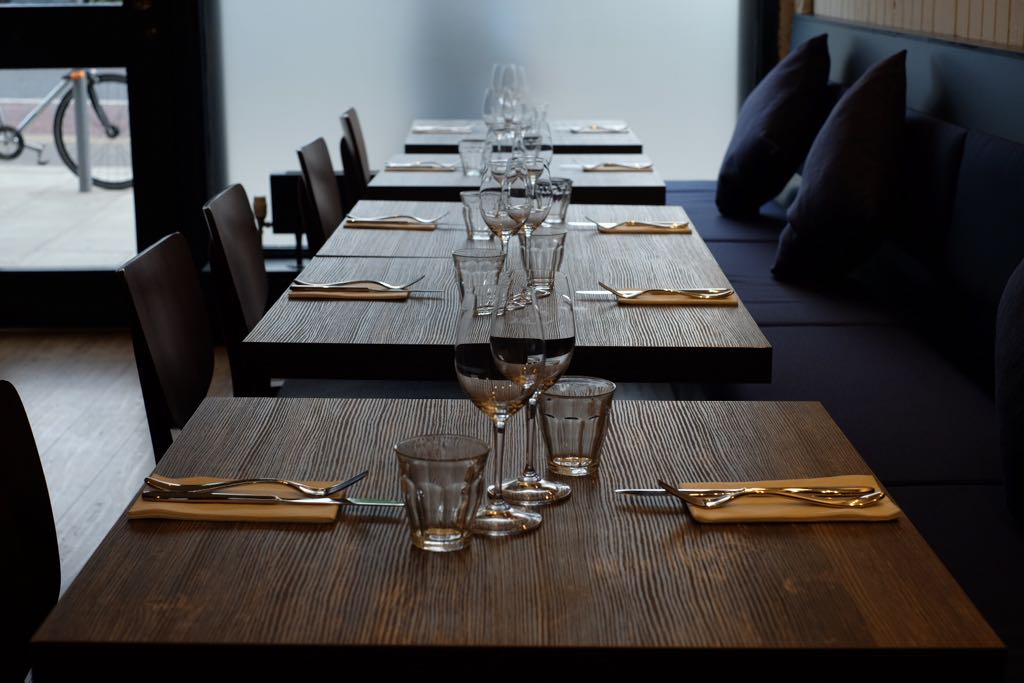
Using regional and seasonal ingredients wherever possible, Roberta combines French techniques and her own creativity when elevating classical combinations to a higher level. The limitations of her small kitchen, with fixed top burner and pull-down oven, and the absence of a water bath and other specialised equipment, have not prevented her from producing dishes which surprise and delight. Moreover, the acquisition of a small Konro BBQ grill will enable her to experiment with the flavours of the southern USA, a more recent interest.
As her menu changes roughly every three weeks to embrace what is best in the market, there is no signature dish. However, much thought goes in ensuring balance on the a la carte menu, always offering meat, fish and vegetarian options on the starters and mains, with cheese as an alternative to two desserts. Menu descriptions list the main ingredients but give little idea of the creativity, multiple processes and meticulous attention to detail involved.
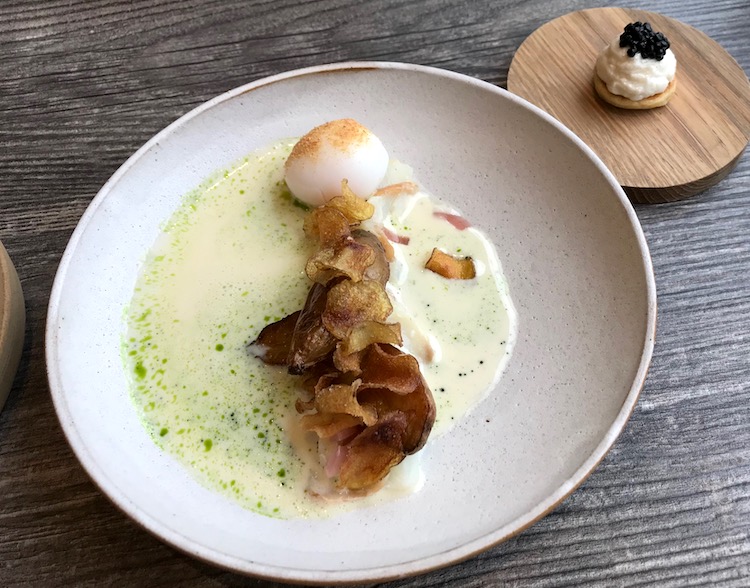
This was particularly true of a starter of “Potato soup, Arbroath Smokie, quail’s egg and cod’s roe and blini,” an original and playful take on Cullen Skink. Pink fir potatoes were baked, passed through a sieve and blended with an infusion of the fish, to maximise the soup’s smoky flavour. Flakes of the smoked haddock were topped with deep fried Pink Fir crisps, together with sweet and sour pickled red onions. Garnished with a soft-boiled quail’s egg, dusted with a powder of dehydrated potato skins and specked with parsley oil, the dish was accompanied by a potato blini topped with cod’s roe and caviar. Finally, as the dish was bought to the table, it received a spray of vinegar, to give that classic fish and chip shop aroma. Harmony and balance were achieved through a combination of smoky and creamy flavours, soft and crisp textures, and warm and cold temperatures. The use of the whole potato in various forms was equally impressive.

Another inventive yet seemingly simple dish was a main course of “Monkfish, braised squid and saffron butter sauce.” Harmony was achieved by matching the hearty, meaty pan-fried fish with strongly flavoured accompaniments. Squid, which had been braised in fish stock for four hours, was then finely sliced and flavoured with its ink. Turnip tops and asparagus, pan fried in butter to retain their al dente texture, balanced the softness of the monkfish and squid. The velvety smoothness of the verjus based saffron beurre blanc added a rich, earthy flavour and a distinctly vibrant colour.
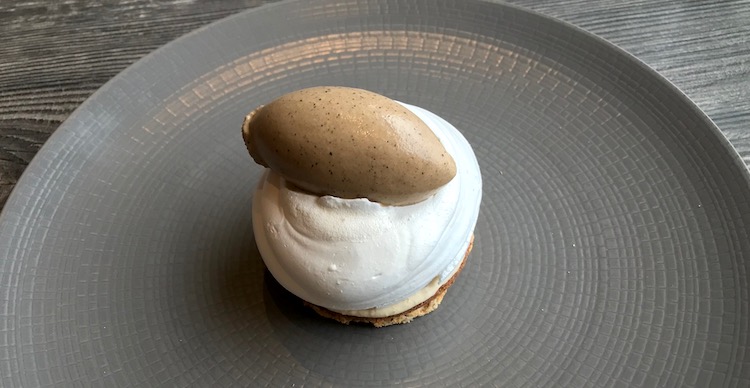
Roberta claims not to be as strong on desserts as on savoury courses, with new creations being trialled before appearing on the menu. Nevertheless, her meringue dessert showed considerable imagination, skill and sophistication. A base of hazelnut dacquoise was topped with layers of praline paste, chocolate and feuilletine flakes, meringue and coffee parfait. Not too sweet, the gentle bitterness of the coffee and chocolate balanced the sweetness of the meringue and praline. There was also contrast in the crisp, nutty and soft textures and the different temperatures.
Consistency across the menu and over time is achieved by her multifaceted team. With just three options on the three course a la carte menu, which is changed roughly every three weeks, the kitchen has ample time to perfect the dishes. Together with three chefs, only two of whom are on duty at any one service, Roberta and husband and co-owner Shaun McCarron who is front on house, do everything from meet and greet, taking orders, making drinks to cooking and serving food and washing up. Team work is also involved in helping to judge a new dish before it goes on the menu. More importantly, staff are not overworked to maintain a healthy work life balance, which feeds through to a more polished performance in the restaurant. Shifts range from two and a half to four days maximum and they are closed Mondays and Tuesdays.
A set, no choice three course lunch for £19 is only one indicator of the restaurant’s value for money. Although prices are higher on the a la carte menu, what must also be considered is the impeccable quality of the produce, the skill involved in cooking and the modest mark up on the wines. Engaging, knowledgeable service, with the personal touch in relaxed surroundings, also encourages repeat custom, an acid test for success. Indeed, one guest recently dined for the 50th time.
As for the future, Roberta will strive to improve even further having already secured her place in the highly competitive restaurant scene. She is looking forward to guest chef appearances during the year; hopefully the current coronavirus crisis will not affect these and her business too drastically. Roberta has achieved much and has much more to give, so it would be sad if factors beyond her control prevent her from achieving her full potential.
Fine Dining Guide wishes Roberta continued success and will follow her career with interest.






